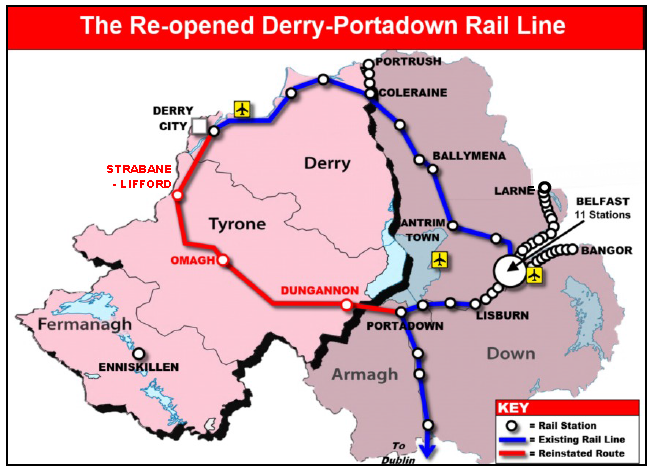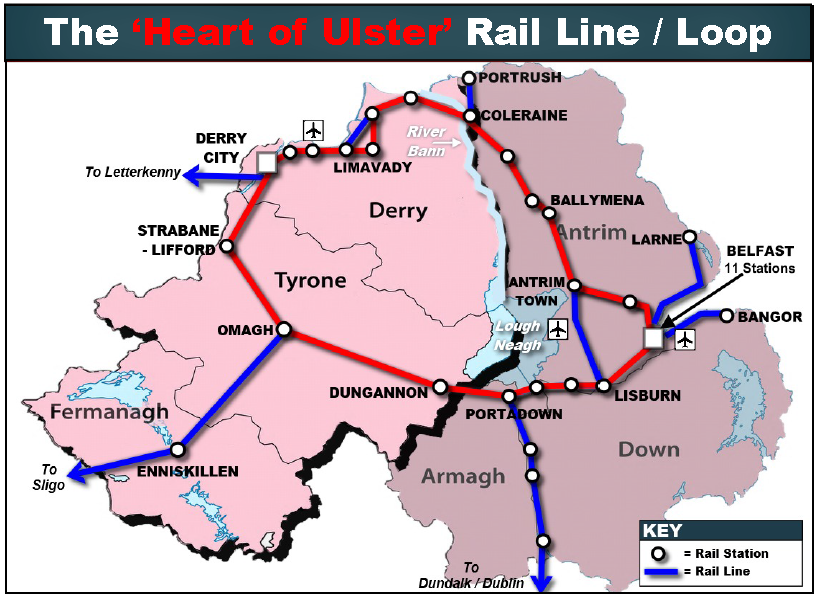• The ‘Derry Road’ rail route ran for 75 miles from Derry to Portadown until it closed in 1965 (despite reportedly running at a profit/financial surplus). The route linked together NI’s second city, the NW of the island and County Tyrone with Portadown, Belfast and Dublin. It also provided a spine of rail through the middle of Tyrone – connecting its 3 largest towns (Omagh, Dungannon & Strabane).
• No other rail reopening on the island would connect so many people across so many key population centres and counties. It would link almost 200,000 people in Derry, Strabane, Omagh, Dungannon and Portadown alone = one-fifth of NI’s largest towns. In total a quarter of a million people would be connected, once the hinterland of those towns and smaller stops en-route are factored in.
• It would also connect the West of Ulster and the North-West of the island to Dublin = the island’s main economic, demographic, cultural and tourism hub. And it would do so via the most populated and least expensive route (i.e. by using existing track beyond Portadown).

• A re-opened train station in Strabane could be dual-branded as a cross-border facility for ‘Strabane/Lifford’, to reflect the close proximity of the neighbouring town. This would return a rail service to East Donegal, and open the possibility of EU/ROI part-funding.

• When connected into the existing rail network, the re-opened Derry- Portadown line would enable the creation of a new ‘Heart of Ulster’ rail loop around NI. This ‘Heart of Ulster’ loop would offer an unprecedented level of connectivity within the island’s rail network. It would link together :
5 of NI’s 6 counties.
12 of NI’s 24 largest towns
Over 800,000 people (i.e. 42% of NI’s total population).
